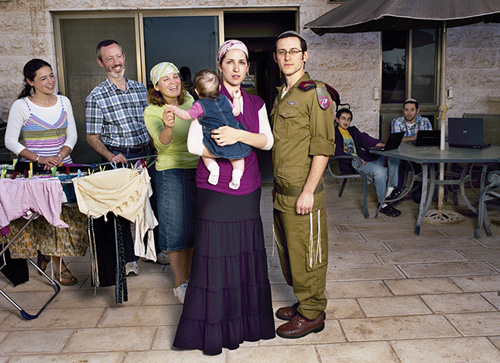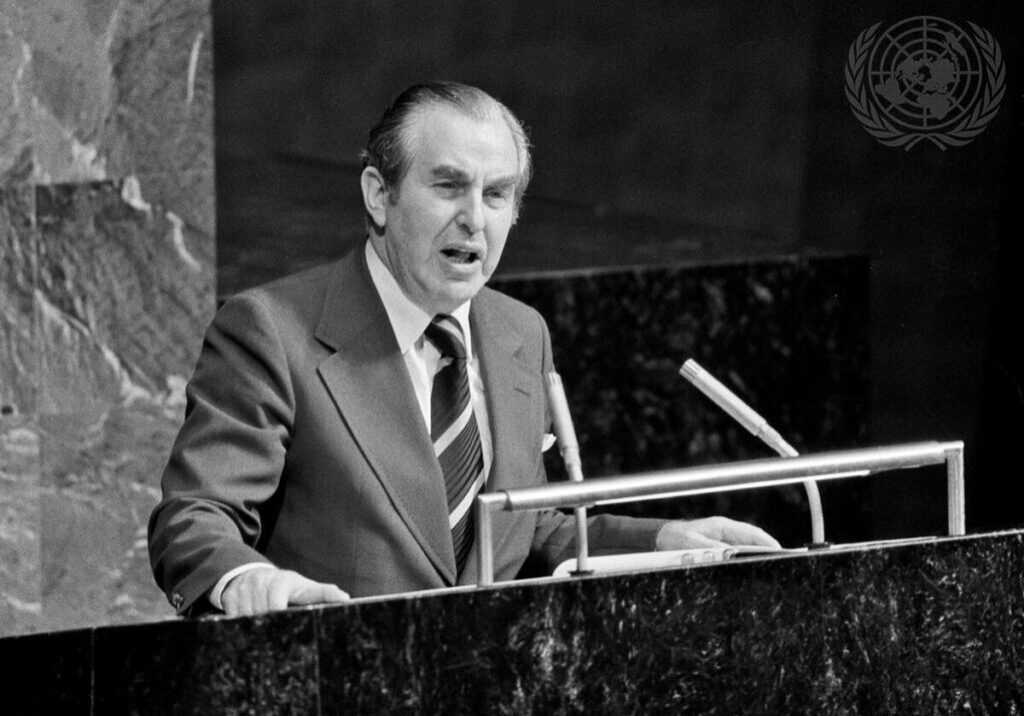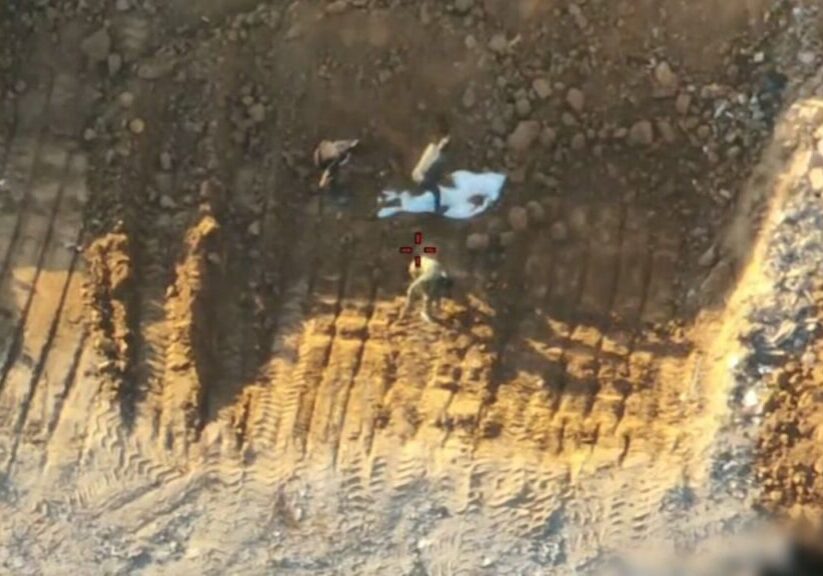Australia/Israel Review
Biblio File: Getting Settled
Sep 12, 2017 | Evelyn Gordon

Evelyn Gordon
City on a Hilltop: American Jews and the Israeli Settler Movement
by Sara Yael Hirschhorn, Harvard University Press, 368 pp., US$39.95
Sara Yael Hirschhorn’s City on a Hilltop starts with two eminently reasonable premises. First: If you want to understand the Israeli-Palestinian conflict, you must understand Israeli settlers, since they’re one of the players. Second: If you want to understand the settlers, you must move beyond the popular caricature of them as ultra-nationalist, ultra-religious fanatics, since most are neither.
Hirschhorn’s book is an attempt to do exactly that, which is all the more admirable given her own political views: She characterises any Jewish presence beyond the 1949 armistice lines – including the large Jewish neighbourhoods of east Jerusalem, whose tens of thousands of residents she also labels “settlers” (in a footnote) – as an illegitimate colonialist occupation. Yet despite the obvious sincerity of her effort, her inability to rise above her own biases ends up undermining the final product.
Hirschhorn explores the settlement movement by focusing on one particular subset of it: American immigrants from what she terms “the 1967 generation.” This has the obvious advantage of making her subjects more recognisable to non-Israeli readers. As she notes, these immigrants grew up in the same towns, attended the same colleges, followed the same career paths, marched for the same liberal causes, and even voted for the same party as their peers who remained in America.
And while popular perception dictates that most settlers, and especially most American settlers, are Orthodox, most of the settlers in Hirschhorn’s focus group were non-Orthodox.
The only major difference between the two groups is that most of the settlers whom Hirschhorn looked at came from “strongly Jewish” backgrounds that were “highly atypical of Jewish-American households at the time.” The downside of this narrow focus is that it makes American immigrants seem far more important to the settlement movement than they actually are. For instance, over half the book is devoted to in-depth descriptions of how American Jews co-founded three settlements. That may sound impressive, until you realise there are currently more than 120 settlements, the vast majority of which were founded by Israelis with no American help. Indeed, as the book itself makes clear, even those three settlements would probably never have arisen had the Americans not had Israeli partners, since the Israelis were the ones who knew how to work the government bureaucracy.
The same goes for Hirschhorn’s estimate that Americans make up 15% of the total settler population (about 60,000 out of 400,000), which she repeatedly cites as proof of their importance. The accuracy of that estimate is open to question; she admits that no “accurate and objective headcount” exists and that she herself is “neither a professional statistician nor a demographer.” But even if she’s right, that still means there are 340,000 non-American settlers. In other words, the settlement movement would be flourishing even if it didn’t include a single American. Hirschhorn also hypes the role that Americans have played in vigilante terror, despite correctly acknowledging that most American settlers – and most settlers in general – shun such vigilantism. For instance, she spends seven pages on one American involved in the Jewish Underground (1980-87) without ever explicitly saying that the other 26 suspects were Israelis.
But the book’s far more serious problem is that readers emerge from it with no clear understanding of what drives the settlement movement. This isn’t surprising, since Hirschhorn admits in her conclusion that she herself has no such understanding: “After discussions with dozens of Jewish-American immigrants in the occupied territories, I still struggled to understand how they saw themselves and their role within the Israeli settlement enterprise.”
Consequently, she’s produced an entire book about settlers that virtually ignores the twin beliefs at the heart of their enterprise: Israel has a right to be in the territories, whether based on religious and historical ties, international law, or both; and Israel has a need to be there, whether for religious and historical reasons, security ones, or both.
This glaring omission seems to stem largely from her inability to take such beliefs seriously. In one noteworthy example, she writes, “While their religio-historical claims to the Gush Etzion area are highly contentious, many settler activists over the past fifty years have asserted Biblical ties to the region.” But what exactly is contentious about that assertion? No serious person would deny that many significant events in the Bible took place in what is now called the West Bank, that Jews inhabited this area throughout the Second Temple period (which is precisely why the Romans called it Judea), and that they continued to live in certain parts of it thereafter. Hebron, for instance, had an almost continuous Jewish presence right up until Britain evacuated the Jews in 1936 in response to Arab rioting. One could argue that this doesn’t justify Jews living there today, but if you can’t acknowledge that this area is Judaism’s religious and historical heartland, and that many Jews consequently believe that giving it up would tear the heart out of the Jewish state, you can’t understand a major driver of the settlement movement.
Similarly, Hirschhorn pays scant attention to the security arguments for retaining the West Bank, and none at all to Israel’s strong claim to the area under international law. Because she ignores these fundamental issues, she winds up focusing on secondary ones, like the immigrants’ enthusiasm for pioneering and their desire to set up model communities. But she never asks why they insisted on doing their pioneering beyond the 1949 armistice lines rather than within them, as other American immigrants of that generation did. And few of her interviewees volunteer the kind of clear explanation Bobby Brown of Tekoa offers: Israel’s borders would be “determined by where people lived,” so settlements “protect the land for future generations.”
The result is that while most of her settlers don’t come off as fanatics, they often do come off as simpletons – people who became “colonialist occupiers” for no apparent reason, without ever really thinking about it.
All this is compounded by Hirschhorn’s frequent insertion of unsubstantiated slurs. For instance, she repeatedly accuses the settlements of Efrat and Tekoa of expropriating privately owned Palestinian land, an accusation she backs by citing exactly two cases. In the first one, Palestinian claimants threatened to go to court against Efrat, but Hirschhorn admits she has “not been able to locate” any record of suit actually being filed. In the other, a suit was filed against Tekoa, but it “did not go anywhere” – or to put it less euphemistically, the claimant lost. This isn’t because Israel’s Supreme Court hesitates to find in favour of Palestinian claims of illegal expropriation; it has done so many times. But most such cases involve unauthorised outposts. The vast majority of the legal settlements were careful not to build on private Palestinian land.
Another salient example is the allegation that Baruch Goldstein’s wife knew of his plan to massacre 29 Arabs in Hebron in 1994 and tried to warn the army. Hirschhorn treats this as credible: “Whether the message was received or acted on remains unknown.” Only in a footnote does she admit that the “authenticity” of this claim “remains unknown,” as it rests on a single Israeli newspaper report picked up by the New York Times.
She never mentions that it was rejected by a judicial inquiry commission that exhaustively investigated Goldstein’s crime.
Nevertheless, her book is unintentionally revealing about one neglected aspect of the settlement story: its frequent incompetence. For instance, even when the government supported building new settlements, as it did in all three of her case studies, construction began only after years of bureaucratic delays, which she reports in painstaking detail.
Hirschhorn deserves great credit for recognising, unlike many of her peers on the left, that demonising settlers is counterproductive, and for trying to do something about it. But much as I’d like to applaud her whole-heartedly, I’m unconvinced her book will do much to help anyone seeking a true understanding of the settlement movement.
Evelyn Gordon is an Israel-based journalist and commentator. © Commentary magazine (www.commentarymagazine.com), reprinted by permission, all rights reserved.
Tags: Israel






